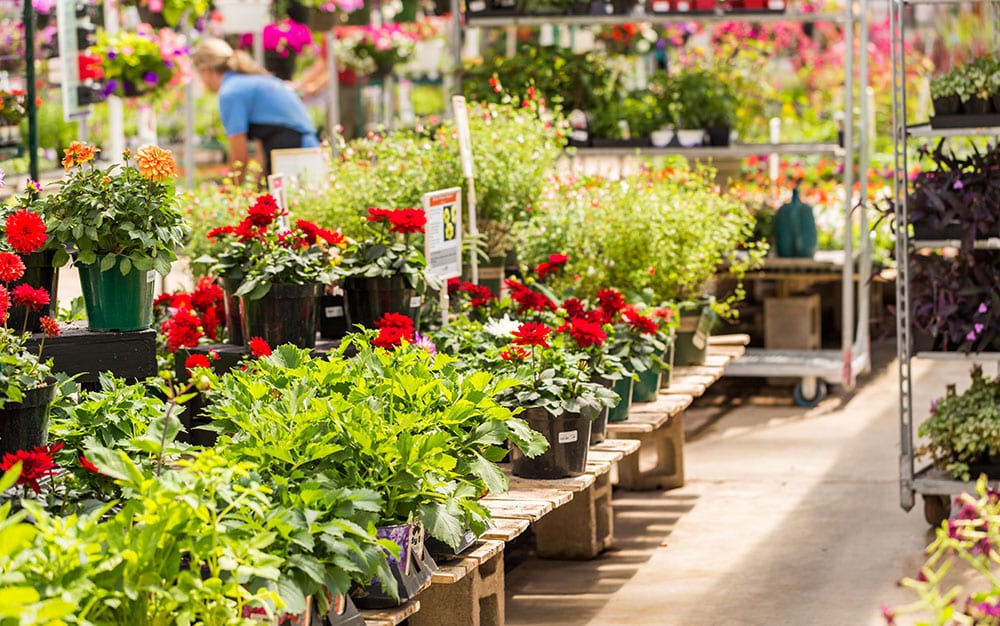Although things may be slowing down in the garden after a successful growing season, autumn is an incredibly exciting season. Autumn is nature’s time for planting, when the ground is still warm, and frosts haven’t quite set in. Here are my top tips for planting in autumn.
Choose the right time for planting in autumn
Generally, the soil in autumn is warm and wet. These conditions are good for planting because the soil is warm enough to allow the roots to settle in and grow before frosts set in.
One common thing to plant at this time of year is soft fruit. Doing this now whilst the ground is still warm will give time for roots to establish. This will in turn lead to a healthy crop the following year.
Similarly, spring bulbs are planted during autumn too. For bulbs like daffodils and tulips, a warm and sunny spot with good drainage is best.
Buy healthy plants
This isn’t necessarily just a tip for autumn, but all year round. When shopping at the garden centre, there are a few tell-tale signs to look for to check whether plants are at their best for planting out.
Look at the roots that are coming out the bottom of the pot. If they are woody and thick, it may show that they’ve been growing in that pot for a while and could have trouble establishing. On the other hand, if the roots peeking through are fresh looking, this is a good sign that it’s ready to be planted out.

Encourage healthy roots
Continuing from that, you can encourage healthy roots by teasing the roots once removed from the container. When doing this it can help the roots to grow outward rather than staying in the restricted position of the pot.
Provide support
The roots of the plant have several uses. Of course, they allow the plants to get access to nutrients and moisture from the soil. However, they also have the role of anchoring plants to the ground and keeping them in position. To reduce plants snapping, becoming week, or rocking in the wind, support can be ideal for some plants.
Not all newly planted plants will need staking, but if it does, a low stake may be beneficial whilst establishing.

Plant at the right depth
When transplanting plants from a container to the ground, or from one area to another, the planting depth is important. Planting too deep so the roots sit too low can lead to adverse growth. Burying the roots deep means the plant may rock and the trunk might lead to the hole surrounding the trunk growing.
In general, a good rule of thumb is to dig a hole twice the width of the root system, at the same depth as the root system. When planting containerised or bare root plants, place the shrub or tree so the top level of roots is level with the surface of the soil.
Mulching in autumn
You’ll hear this word a lot, in relation to using it in your garden, or making your own. You can make your own mulch by composting home and garden waste, or by creating leaf mould with fallen leaves in autumn.
Mulching can be done year-round. It keeps moisture in during long dry spells, whilst also keeping weeds at bay, and insulating plants over winter.
Soak plants before planting
The ideal time to plant bare-rooted plants is between November and March. These are the plants that have been grown in the ground, before being dug up and sent out to be ready to be planted during their dormant season.
They don’t have soil around the roots, so before planting, it’s ideal to soak them for approximately 30 minutes before planting. On the other hand, plants that are grown in containers will benefit from a good soaking before removing from the pot to be planted up.
Keep it clear
Get rid of any dead, diseased or damaged foliage and flowers. This is important all year round to keep plants looking and growing healthily and happily. At this time of the year, when the growing season is over, it’s a great time to take a look at your garden and clear out any branches, foliage, and flowers that are looking a bit worse for wear.
Autumn clean
Scrub off any shade paint from your greenhouse to let the light back in. It’ll help increase temperatures inside the greenhouse as the weather cools down. Whilst you’re doing this, it’s the perfect time to clear the gutters of the greenhouse to rid any debris like fallen leaves.
Give the greenhouse a sweep and clean any pots and containers that aren’t being used so they’re ready to be used again.
Green manures
For good quality soil, you can get a step ahead during autumn and winter. After the harvests of the fruit and veg plot are done, green manures can be grown, utilising the space, rather than leaving it open. By covering the ground with these plants, it’ll reduce the risk of wind and rain washing away the top level of the soil which is rich in nutrients.
The benefit of these plants is that they take up the nutrients from the soil and hold them until they’re dug into the soil or used as a mulch, which returns the nutrients to the soil ready for another growing season.


Leave A Comment